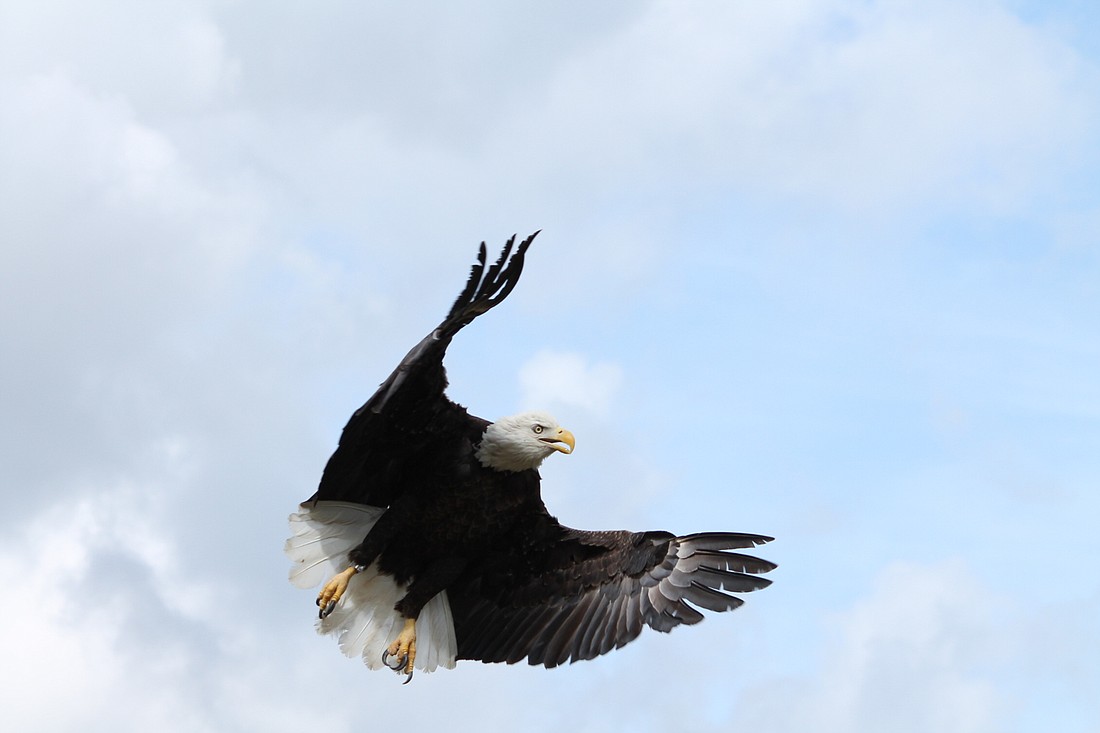- April 28, 2024
-
-
Loading

Loading

Audubon Florida celebrated a success Nov. 18 in Gotha, with the release of its 525th rehabilitated bald eagle since the Audubon Center for Birds of Prey opened in Maitland in 1979.
The adult female was found Sept. 27 in Gotha after being hit by a vehicle, the leading cause of injuries to birds of prey. It suffered an injured coracoid (a shoulder bone).
“It’s always important for our conservation success to get these birds back into the wild where they belong,” said Katie Warner, program director at the Audubon Center.
After four weeks caring for the eagle in the clinic, Audubon staff started working with the eagle in an onsite barn where birds learn to fly again. Its natural behaviors were soon restored.
Audubon Florida invited Attorney General Pam Bondi to be present for the eagle’s release at
Woodlawn Memorial Park because of her efforts to acquire easements on ranches south of Orlando.
“Most people don’t know, but the great stronghold of the bald eagle in Florida is in the Kissimmee prairie, just south of here,” said Charles Lee, director of advocacy for Audubon Florida. “Most of the ranch owners there are interested in keeping that land in ranches forever to benefit the eagles and the other wildlife.”
Bondi said she had once released a rehabilitated panther back into the wild and was excited to release the eagle.
The Audubon Center for Birds of Prey sees about 700 “patients” each year, and 12% are bald eagles. With 1,400 nesting pairs in-state from October to May, Florida has the second-largest population of bald eagles in the United States, after Alaska.
“The bald eagle is really right at the top of the food chain,” Lee said. “If you look at the food chain as a balanced, ecological system, you’ve got to have eagles.”
It is illegal to harm, harass or possess any wild bird. But you are allowed to rescue a wild bird as long as you take it to a permitted facility as soon as possible. Here’s what you should do if you find an injured bird of prey:
1. Be careful. Talons and beaks are designed to kill and tear prey.
2. Note the exact location of the bird so that it can be returned there after rehabilitation. If the bird is a hatchling or juvenile, look for a nearby nest and note its exact location as well.
3. Get a box that is slightly larger than the bird and poke lots of air holes into the sides. Place the box over the bird. Carefully slide something flat under the box to contain the bird. If you do not have a box, throw a towel or blanket over the bird.
4. Do not try to give the bird food or water.
5. Transport the bird to a wildlife center right away. Call (407) 644-0190 for the Audubon Center for Birds of Prey or go to wildliferehabber.org to find a different location.
Contact Catherine Kerr at [email protected].